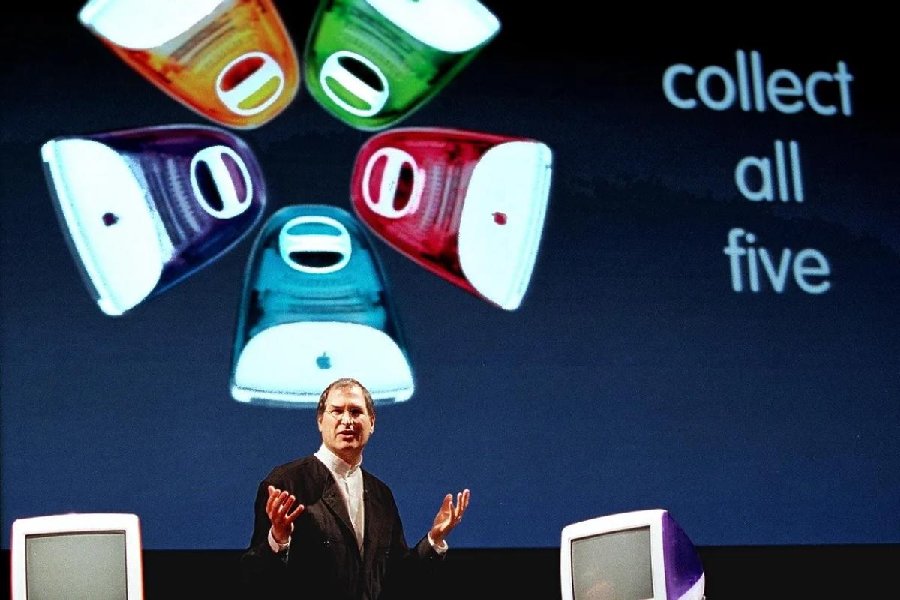The iMac we know today has a sleek design but in 1998 it was bulbous, yet recognisable at the same time. The world is celebrating 25 years of the iMac, which changed the way we look at the all-in-one computer.
In 1997, Apple co-founder Steve Jobs returned to the company at a time when everything was in a mess and the very existence of the company was at stake. What Jobs had was ideas and a young designer named Jony Ive. Computers, till then, was all about mixing and matching, meaning you can have peripherals from different companies. But the process was technical.
Jobs took the then new PowerPC G3 chip supplied by Motorola and top-of-the-line graphical interface to come up with an all-in-one design for the Internet era. Anybody could have a machine that would log them on to the Internet without any technical knowledge.
The iMac was against everything the PC industry then showcased. It wasn’t modular, rather it was a self-contained unit that came with a handle on the top. The machine came in a translucent blue-green plastic, so you could see the inside (and Nothing phone is trying that out in 2023).
All the old-style ports were thrown out and the iMac presented a new standard that wasn’t a rage back then — Universal Serial Bus or USB. That’s right, there was an USB on the computer, which we take for granted in 2023.
The specs were out of the world on the original iMac or the iMac G3. It came with a PowerPC G3 233 Mhz CPU, a 15-inch display, 32MB of memory, 4GB of storage, a CD-ROM drive, and a built-in modem, besides USB ports and integrated stereo surround speakers. It was just one product. And it didn’t have a 3.5-inch floppy disk drive, which was standard back then. “Mon Dieu!” Apple was in the right direction because if you wanted to send a file, why not simply email it across.
Of course, the biggest selling feature was design. When he introduced the first iMac, Jobs said the popular computers were “ugly”. It was the truth because desktop PCs of the time were usually grey, came with bulky displays and needed a separate tower and speakers. It was a mess of cables. The two-tone aqua and white plastic shell caught the eye. The aqua colour was called Bondi blue, which Ive said was inspired by the water at Sydney’s Bondi Beach.
For many, it offered the first encounter with Mac OS X; these were users who had till that point used Windows 98 and 2000. They came to love the icons, the animations, the pinstripes, the bright blue menus… it was sheer beauty. Microsoft man Bill Gates wasn’t happy and said: “The one thing Apple’s providing now is leadership in colours. It won’t take long for us to catch up with that, I don’t think.” Of course, Microsoft couldn’t keep up.
The iMac gave Apple the much-needed cash it required to build products that would secure its place in computing history. Next came Apple Stores and the iPod.






